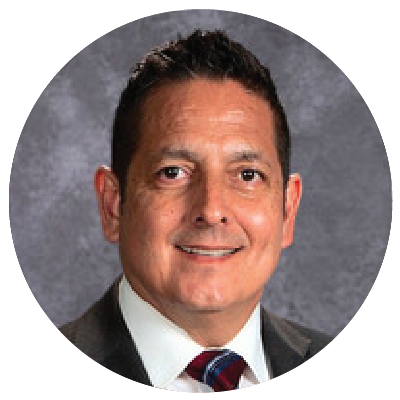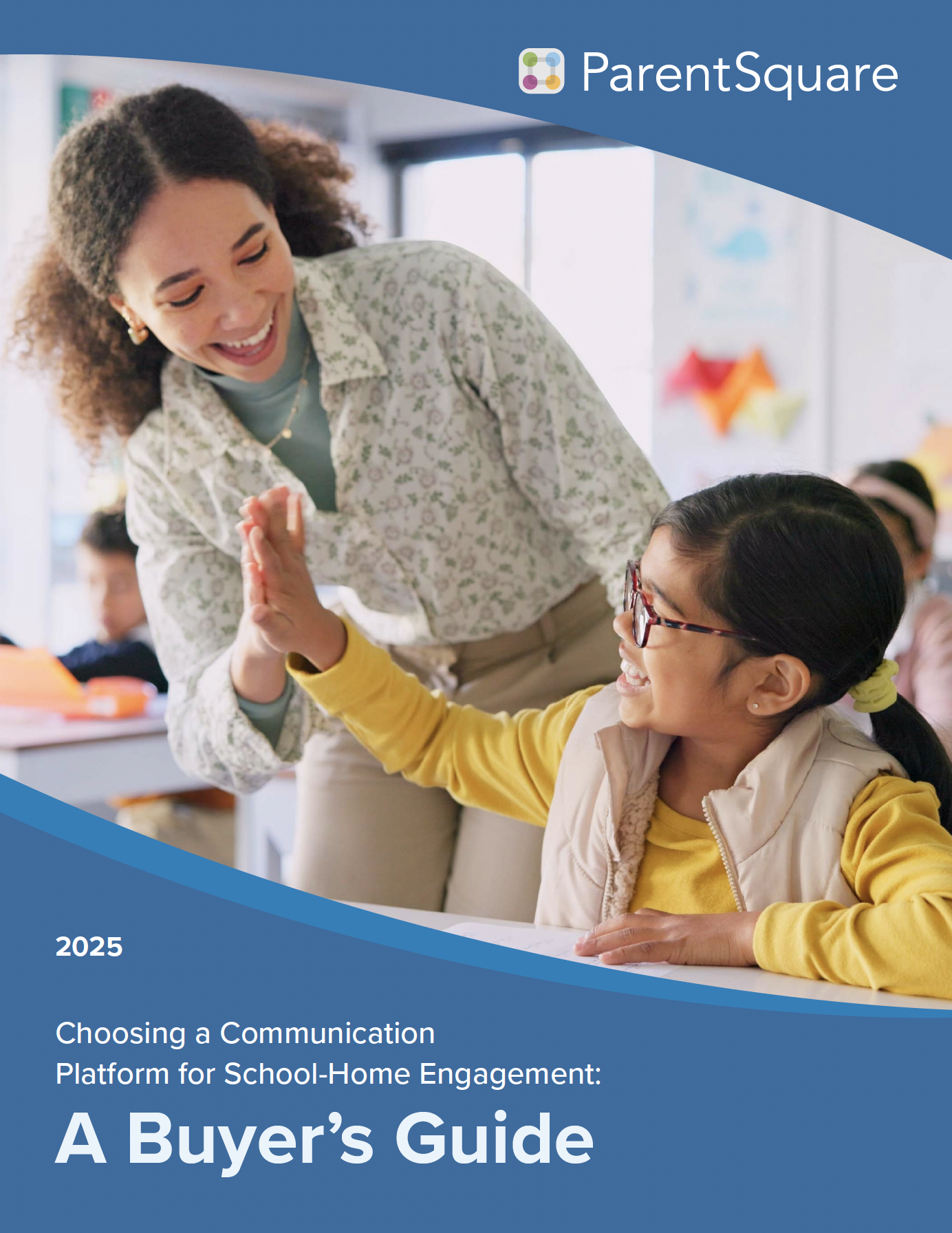
Recently several K-12 district leaders joined us to explore how communication leadership has changed over the past eight months. Read on for highlights from the “Communication Leadership for a Brave New World” panel discussion, including strategies and tactics to make sure you reach and then engage all families, despite the pandemic, school closures, and remote learning scenarios.
Q: How has your leadership and communication approach shifted over the past eight months? What’s remained the same?
Note: This question begins at 3:20 in the recording.
Panelists agreed that when the pandemic hit, internal and external communication became even more critical in order to keep their schools and districts running smoothly.
Jerry Almendarez, Superintendent from Santa Ana USD, pointed out a challenge brought about by the pandemic: keeping your community up to date when guidance and protocols are constantly changing.

“We’re sharing communication in such an efficient, timely manner that we share it in the morning, and it changes by the afternoon…”
“We’re going to keep communicating, and we’re going to keep reminding people that we either get the information [out] in a timely manner, or we wait until we vet it. But if we wait until we vet it, it, could be too late…”
Jerry Almendarez, Superintendent, Santa Ana Unified School District
Dr. Doug Kimberly, Superintendent at Lake Elsinore USD, shared that their biggest communication challenge was tackling misinformation being spread in the wider community, a situation they had not faced before. District communications were being challenged and getting a negative reaction from some in the community, unlike before, when the school district was predominantly seen as a stable, trusted source of information.
Delivering messages to families through school principals instead of district-level channels proved to be an effective change in communications strategy:
“We created district-wide communication but utilized our principals to provide that information, so we would have a trusted source….It didn’t seem as though outside entities or our parents wanted to challenge our principals because they knew them and they trusted them. They saw them on campus every day.”
Dr. Doug Kimberly, Superintendent, Lake Elsinore School District
Dr. Kimberly added that using ParentSquare “has really made it simple and easy for our parents to gain information, actual information that we want them to have.”
Dr. Daisy Morales, Asst. Superintendent, Educational Services from Salinas City Elementary District, noted that she was grateful to have ParentSquare in place when school closures began. They had started using it at only a few schools at that point, but because parents in the district were already set up with it, they were able to consistently communicate with everyone district-wide, right away. For Salinas City Elementary District, “it made a world of difference.”
“We’ve become a lot more patient and make sure that our message is calm as we share it with others, because if we’re calm, it trickles down and everybody else is calm.”
Dr. Daisy Morales, Asst. Superintendent, Educational Services, Salinas City Elementary District
Jerry Almendarez mentioned that moving to virtual meetings had unforeseen benefits: in the past, it might take weeks to organize face-to-face principal meetings, director meetings, site meetings, etc. and get everyone aligned and decisions made. Using virtual meeting platforms, they could include more people in important decisions and planning without the previous logistical difficulties:
“Over time, what traditionally was just a principals’ meeting or a directors’ meeting evolved into this larger collaborative group that really helped us, and allowed us to make decisions, good decisions, not just a decision, but good decisions.”
Jerry Almendarez, Superintendent, Santa Ana Unified School District
While district leaders have faced a number of challenges during the pandemic, Dr. Sonia Llamas reminds us that we should find positive aspects to focus on:

“I think leaders have a responsibility to acknowledge a crisis and convert it into something hopeful for all of their stakeholders.”
Sonia Llamas, Asst. Superintendent, Santa Ana Unified School District
Q: How are you sustaining district communications with one clear voice?
Note: This question begins at 17:38 in the recording.
In a normal school year, it can be challenging to make sure that communication channels at all levels, from a conversation with a teacher to the district office, is consistent. School closures, distance learning scenarios, and the increase in information that needs to go out makes it especially important.
Jerry Almendarez recalled how, when the crisis first hit, many organizations and businesses came forward to help with free resources for schools, families and students. Site administrators would communicate them out, with the best of intentions, but it soon became clear that they needed to streamline a process, so that information could be properly vetted first and to make sure the community wasn’t overwhelmed with information. Over the first three weeks they managed to set up a centralized process so information could be vetted and approved before it went out.
Dr. Emy Flores raised the idea that district communication should aim to bring the community together and align with values and purpose:

“It’s very important that we always come back to our “why”…For us it’s important that, as we communicate to our community, that we communicate that we value family, that we value partnerships, and we value being together.”
Dr. Emy Flores, Superintendent, Evergreen School District
Dr. Kimberly shared that they set up a Communications Committee, made up of principals and assistant principals, to keep an eye on social media in the community and respond to any misinformation with correct information, in a consistent voice. They also come up with messaging that is then disseminated to the entire administrative team, so everyone is on the same page.
“I would suggest if there are districts on the call that are struggling with a centralized voice, that even multiple people can work together to create one voice. That helped us a lot.”
Dr. Doug Kimberly, Superintendent, Lake Elsinore School District
Dr. Morales detailed how they ramped up internal communications. Before March 2020, they sent out a “Team Weekly” and a “Staff Monthly,” but staff updates soon increased to weekly. Regular stakeholder meetings also increased in frequency, followed by a “united communique” sent out after each meeting, to keep the entire community aligned and up to date on developments.
The district team also supported schools by fielding any incoming questions that staff couldn’t answer. Questions were routed to the district for action, and the answers were sent out to everyone, not just the requesting person, to support everyone and ensure one voice.
Q: How are you communicating with your hardest-to-reach families?
Note: This question begins at 31:01 in the recording.
A big struggle that every superintendent faced was reaching every single student and family. However, they all came up with effective and innovative ways to make sure that every family could be contacted.

“Our demographics in Salinas really appreciate the phone calls. And so, even though we send emails and text messages…that personal connection is what’s making a difference in our community in terms of communication.”
Dr. Daisy Morales, Asst. Superintendent, Educational Services, Salinas City Elementary District
For Dr. Llamas, ParentSquare was very useful because it identifies exactly who is reachable and who is not. [Dr. Llamas is referring to ParentSquare’s real time dashboards and downloadable activity reports.]
She detailed the impressive, massive effort their district made, to ensure they reached every student and family and had accurate contact details in the system. Efforts included mailed letters, phone calls, home visits, organizing staff to verify contact information during nutrition service pick ups, and working with community partners. They were able in the end to reach all but four students out of 45,000.
Dr. Kimberly echoed Dr. Llamas’ appreciation for the efforts of food service partners and others to help connect with hard-to-reach families. In the Lake Elsinore School District, they organized for food service pick-up outside of school sites.
“We found that one way to attract some energy and communication was to move a grab and go food service distribution to the community itself.”
Dr. Doug Kimberly, Superintendent, Lake Elsinore School District
Bus drivers in the district helped reach out and find families and students during school closures, when bussing wasn’t taking place. This was successful: many of their bus drivers live within the community and were comfortable talking to people.
Jerry Almendarez made a poignant observation:
“One of the reasons why I think we’ve had so much of our community respond to some of our communication, is because we transitioned from an academic institution to a social service institution during the COVID crisis. When it hit, it was about getting through to the kids, and then very quickly we realized that it wasn’t just the kids that needed food.”
Jerry Almendarez, Superintendent, Santa Ana Unified School District
Dr. Morales and Dr. Flores also touched on the massive effort across many communication channels that took place to ensure school-home communications reached every family.
“It literally took the whole team, from classified to certified, to make sure that the information that we needed to reach our parents was there.”
Dr. Daisy Morales, Asst. Superintendent, Educational Services, Salinas City Elementary District
“There is a saying — and I really believe in this — that if you don’t control the message, other people will control it for you…we were very purposeful and that involved different ways of communicating, making sure that it’s done in the languages represented in our community, as well as videos, one-to-one small groups, large group involvement, all sorts of things…this resulted in high stakeholder trust, which was very key, moving into COVID.”
Dr. Emy Flores, Superintendent, Evergreen School District
And here is one more parting thought from Dr. Doug Kimberly:

“It’s really important to have the end in mind, that when this pandemic is over, we are one community again. We are one district again and whether we’re internal or external stakeholders, we’re all going to work together again, live together again, teach kids how to learn to read and write again.”
Dr. Doug Kimberly, Superintendent, Lake Elsinore School District
“It’s really important to have the end in mind, that when this pandemic is over, we are one community again. We are one district again and whether we’re internal or external stakeholders, we’re all going to work together again, live together again, teach kids how to learn to read and write again.”
Dr. Doug Kimberly, Superintendent, Lake Elsinore School District
We thank everyone on the panel for taking the time to share their perspectives, stories and insights! We especially thank our panel moderator, Heather McGowan, President of Sounding Board Marketing & Communications.

